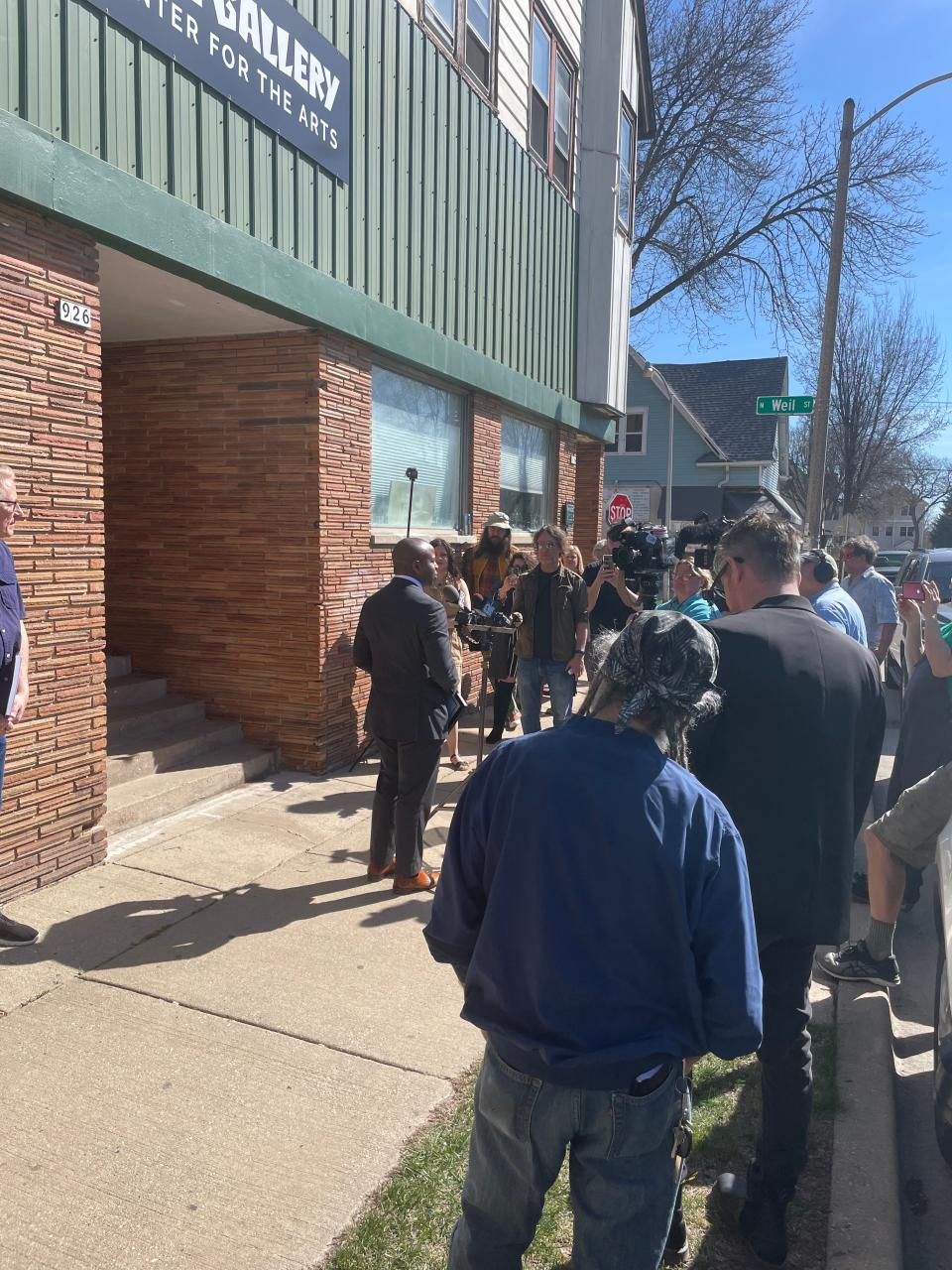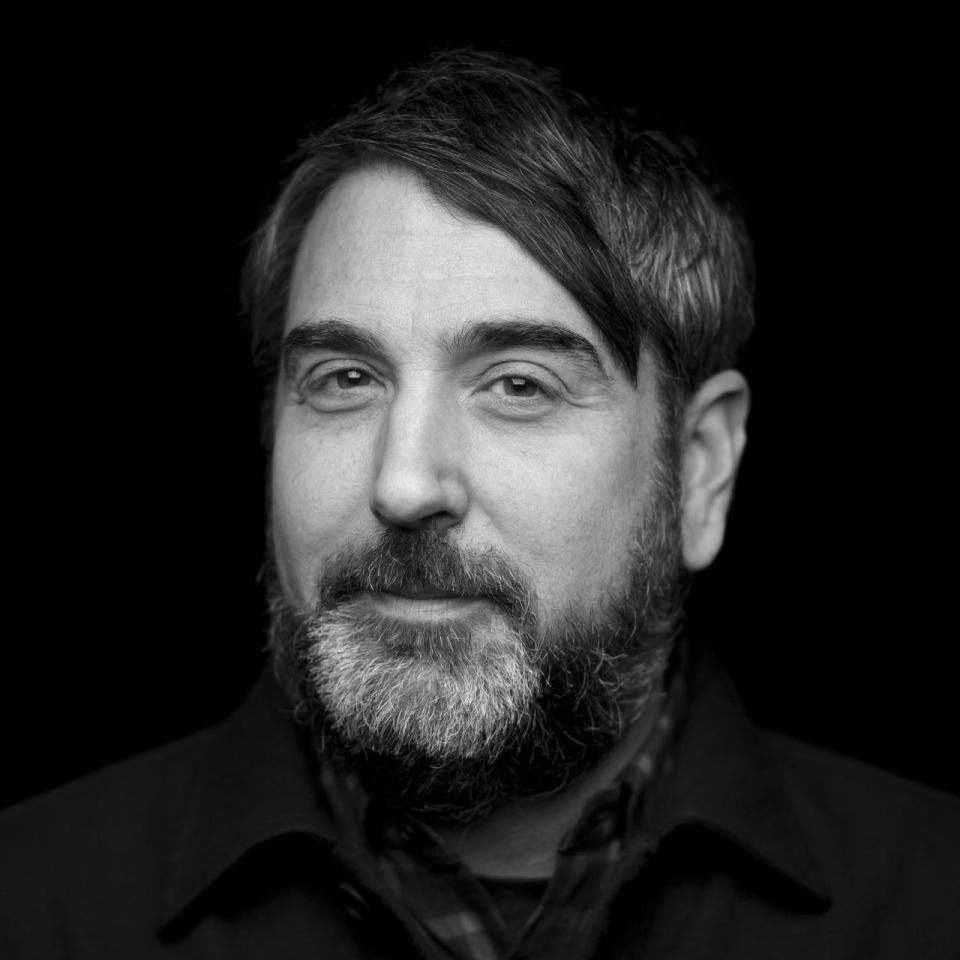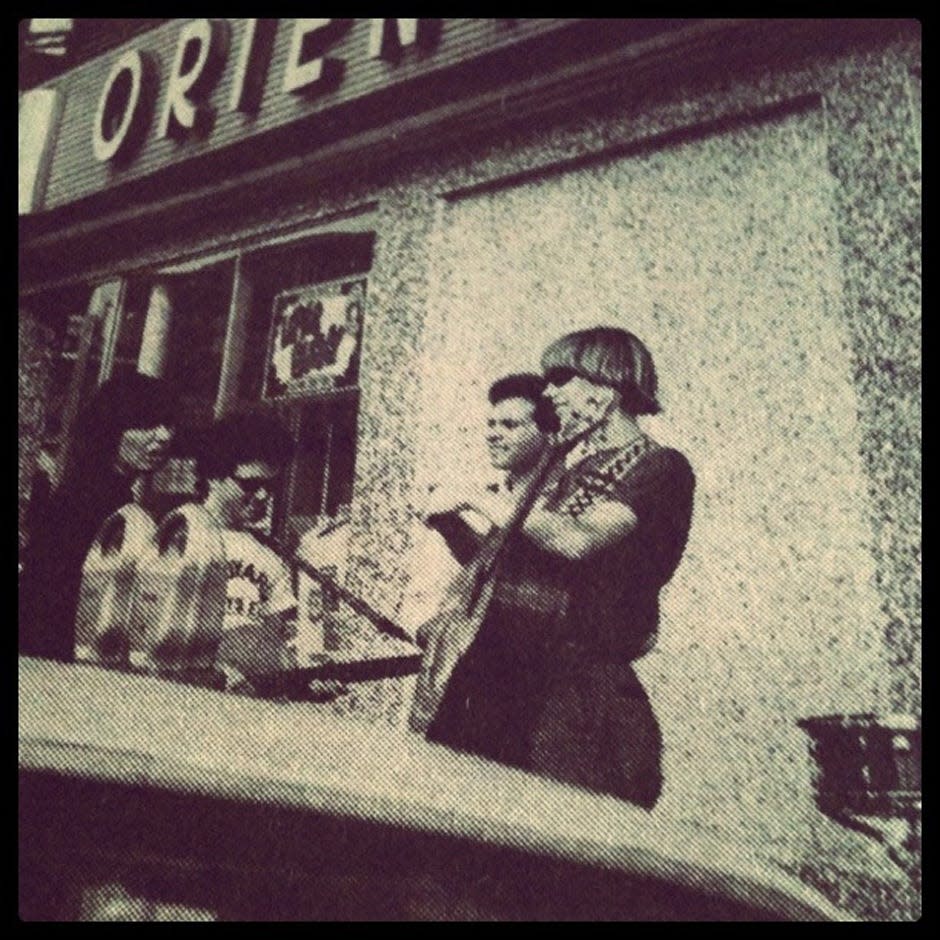Milwaukee slowly embracing cultural legacy with nod to Violent Femmes alternative masterpiece
- Oops!Something went wrong.Please try again later.
- Oops!Something went wrong.Please try again later.
- Oops!Something went wrong.Please try again later.
- Oops!Something went wrong.Please try again later.
One of the most important records in American alternative music was made by a trio of young Milwaukeeans. On April 13, 1983, the Milwaukee-based Violent Femmes – featuring vocalist/guitarist Gordon Gano, bassist Brian Ritchie, and drummer Victor DeLorenzo – saw the release of their self-titled debut album on the venerable independent record label Slash Records.
Despite sounding little like other acts of the era, the Femmes' folk punk sound struck a chord with listeners and critics alike. The band’s first album would go on to sell over three million copies and influence generations of musicians from across the globe. The evolution of alternative music – now a multi-billion-dollar industry – cannot be discussed without talking about the Violent Femmes. And their roots are right here in Milwaukee, as the band honed their craft playing the city’s streets and clubs.
Today is the 40th anniversary of the @violentfemmes debut album which was release on April 13th, 1983. Their debut record is said to be one of the most influential records in the history of alternative music. pic.twitter.com/YL38vDurtR
— Mayor Cavalier Johnson (@MayorOfMKE) April 13, 2023
Yet for much of the past four decades that fact was overlooked by many in the city. Thankfully, that is starting to change. On April 13, 2023, Mayor Cavalier Johnson issued a mayoral proclamation declaring that date “Violent Femmes Day.” This proclamation, while a step in the right direction, must not be the only way the band’s legacy is commemorated. At the same time, the 40th anniversary of the release of the Violent Femmes’ debut album also provides a moment to consider the broader cultural history of Milwaukee that helped shape the band. As Milwaukee continues to redefine itself in the 21st century we see here a usable past – one that highlights Milwaukee as both a cultural innovator and a haven for musical artists.
Perhaps the most noteworthy aspects of the Violent Femmes’ first record was the way it combined a myriad of musical genres into something new and exciting. All of the band’s members were attracted to the raw energy of punk rock, but both Ritchie and DeLorenzo had also cut their teeth in the city’s vibrant jazz scene. Gano, meanwhile, spent much of the early 1980s exploring Milwaukee’s coffeehouses and folk clubs, often playing open-mic nights at such venues. The songs on the band’s first album draw from all these experiences. As Ritchie explains, “We just thought it was a clean sound. It was original. It was jazzy. It was folky. But it was still obviously pop and punk music.”

Such an eclectic sound, however, does not develop without opportunities to engage with such disparate genres. Milwaukee, by the dawn of the 1980s, provided these opportunities. Venues like The Starship (634 N. 5th Street) and the Oriental Theatre (2230 N. Farwell Avenue) brought punk and post-punk bands to town, while the Beneath it All Café (in the basement of what is now Café Hollander, 2608 N. Downer Avenue) and the Metropole (the current Miramar Theatre, 2844 N. Oakland Avenue) booked renowned folk artists and singer-songwriters like Jonathan Richman and Nico. Meanwhile, the Jazz Gallery, located in the Riverwest neighborhood (926 E. Center Street), featured performances by such luminaries as Sun Ra, Dexter Gordon, Max Roach, and Sonny Stitt. Members of the Violent Femmes attended shows at these venues, with all members describing the Sun Ra performance as particularly transformative.
By 1981, band members were also playing at such venues. Promoter Robert Soffian booked Gano to open for Jonathan Richman at the Metropole, while all three members soon after played together at the Beneath it All Café. Milwaukee musician Paul Cebar convinced Jazz Gallery owner Chuck LaPaglia to let the Violent Femmes play the club, as Cebar quickly realized the band was on to something unique. “There was a certain inevitability,” recalls Cebar, “about something being that good.” The band would play frequently at the Jazz Gallery, using the club as a place to try out new material. The Jazz Gallery, according to Ritchie, was the “incubator that enabled us to develop our repertoire and approach documented on the first album and beyond.”
Other cultural spaces, outside of music clubs, were also integral to band’s development. DeLorenzo had come to Milwaukee to study comparative literature, music, and theater, and was soon asked to join Theatre X, the influential theater troupe then housed in the Water Street Arts Center (DeLorenzo replaced Willem Dafoe, who had left Milwaukee to try his luck in New York City – a good choice on Dafoe’s part). Theatre X allowed DeLorenzo to set up a drum set on the building’s vacant third floor, where he was able to hold jam sessions with a variety of musicians.

Yet there was more to this relationship between the band and the theater than mere practicality. “I was always attracted to acting,” notes DeLorenzo, “trying to put on the guise of someone else.” Once joining the Femmes, DeLorenzo came to believe that, “We [band members] were characters that were cast in some kind of drama.” Not surprisingly, a strong sense of theatricality soon informed both the band’s lives performances and studio recordings. The band often took to the stage in grandiose fashion, wearing things like gaudy paisley shirts (Ritchie) and bathrobes (Gano). On the band’s debut album, Gano’s lyrics and vocal delivery are deliciously over-the-top, capturing the “role” of disaffected teenager perfectly – and timelessly.

Such qualities have allowed the band’s first album to be, in the words of Gano, “Communicated now through generations.” It is this staying power that informs the need to honor the band’s importance to Milwaukee’s history. Within the narrative of twentieth-century American music, the rise of alternative music is an important chapter. The Violent Femmes played an important role in that rise. They deserve more than one mayoral proclamation.
Importantly, any efforts to further honor the Violent Femmes must also begin the process of commemorating the cultural infrastructure that allowed the band to reach such heights. Milwaukee’s efforts to find a “post-industrial” identity have been uneven at best. While other cities have been willing to explore their region’s cultural histories – and then to utilize these histories to attract residents, artists, and tourists – Milwaukee has yet to fully engage with such a process. Here is a place where that important work can begin.
Michael H. Carriere is director of the Milwaukee School of Engineering University Scholars Honors Program and an associate professor in the department of Humanities, Social Science, and Communication.
This article originally appeared on Milwaukee Journal Sentinel: Influential alternative album was product of Milwaukee's cultural mix.

